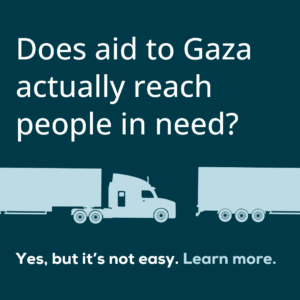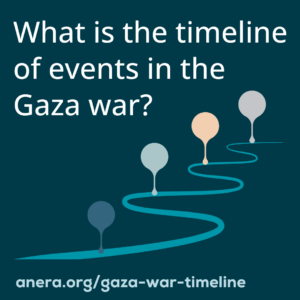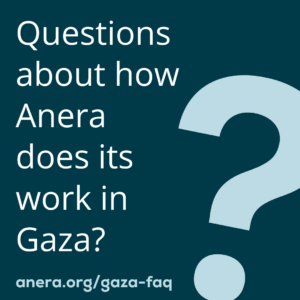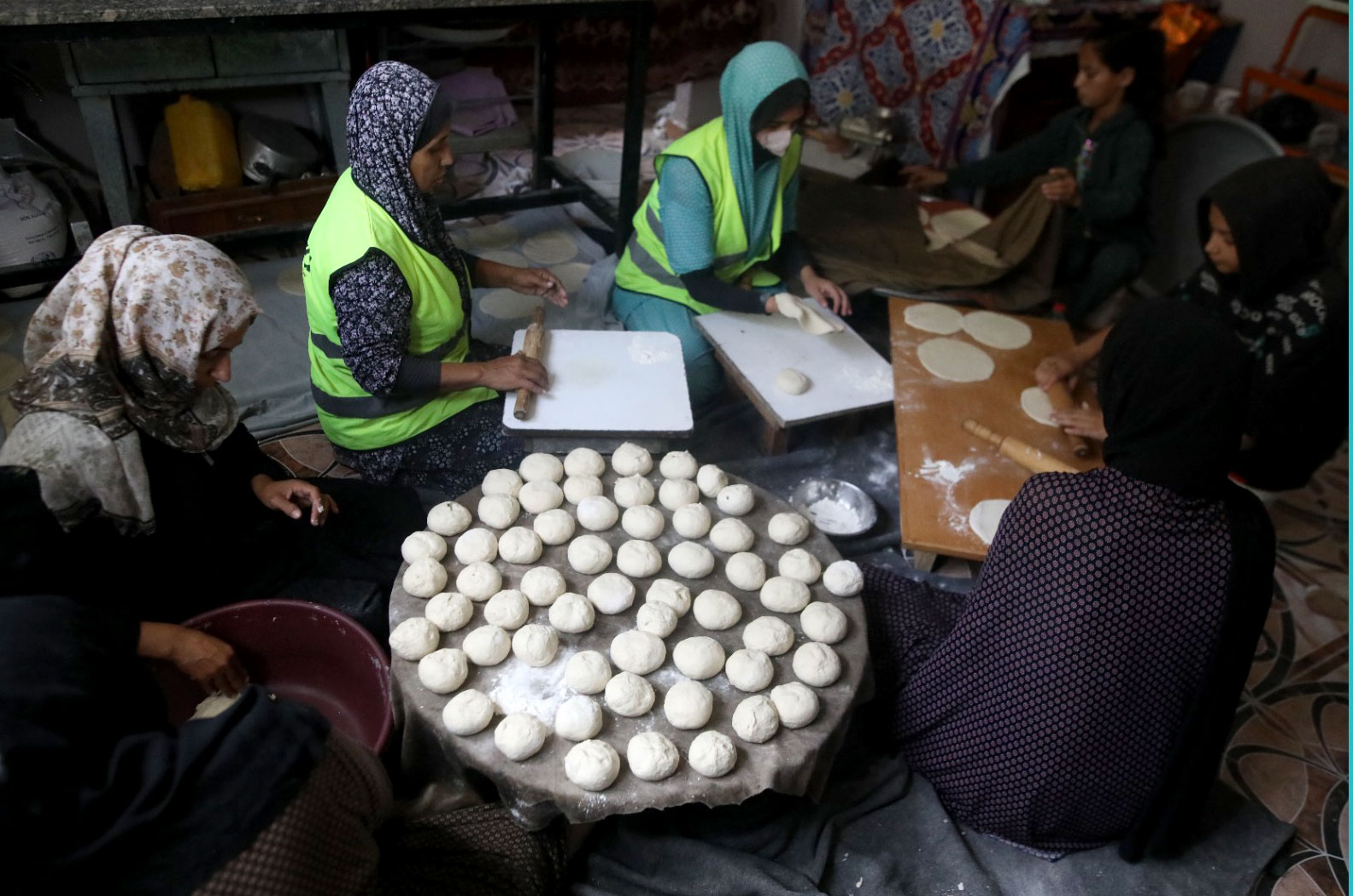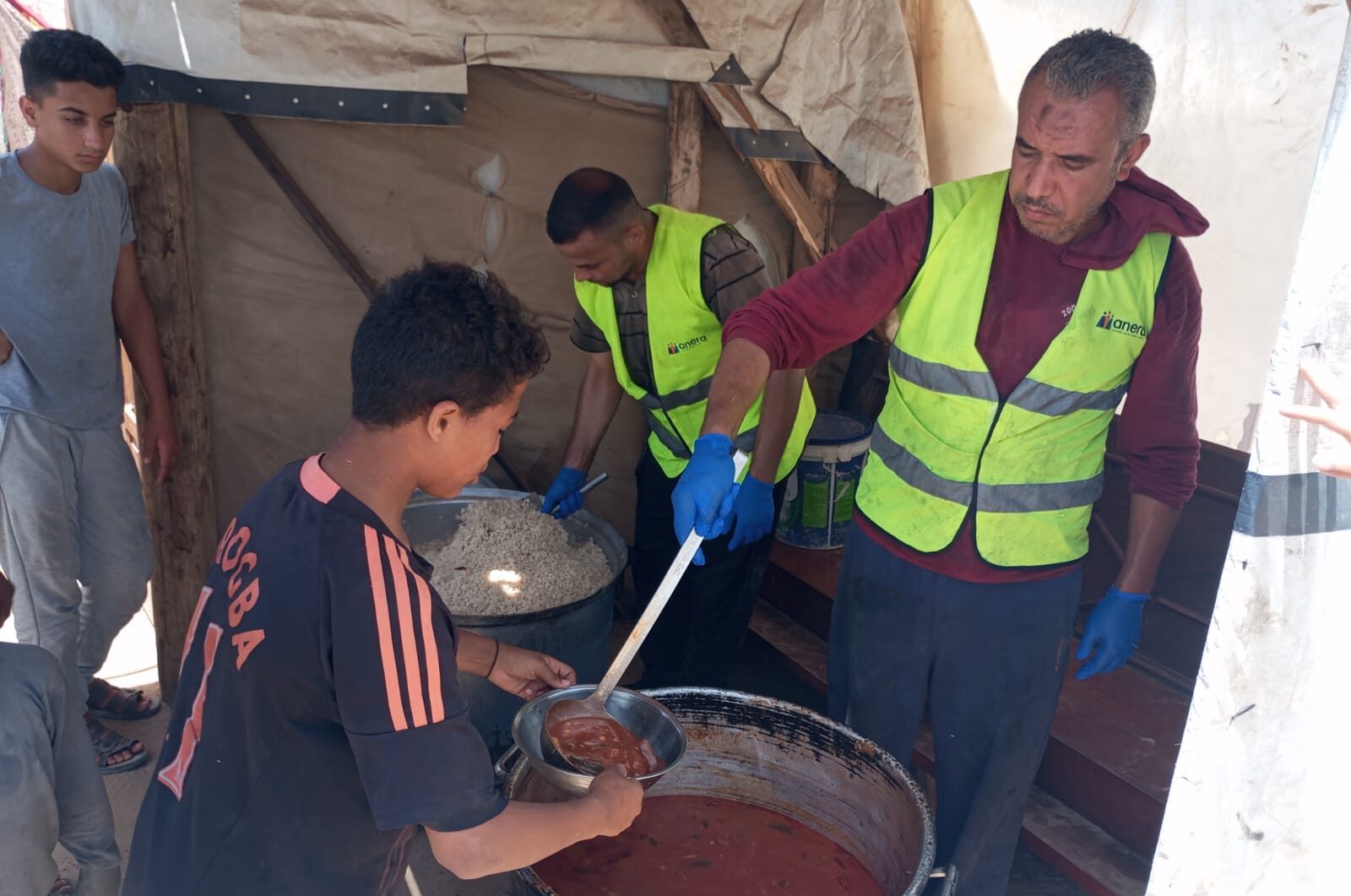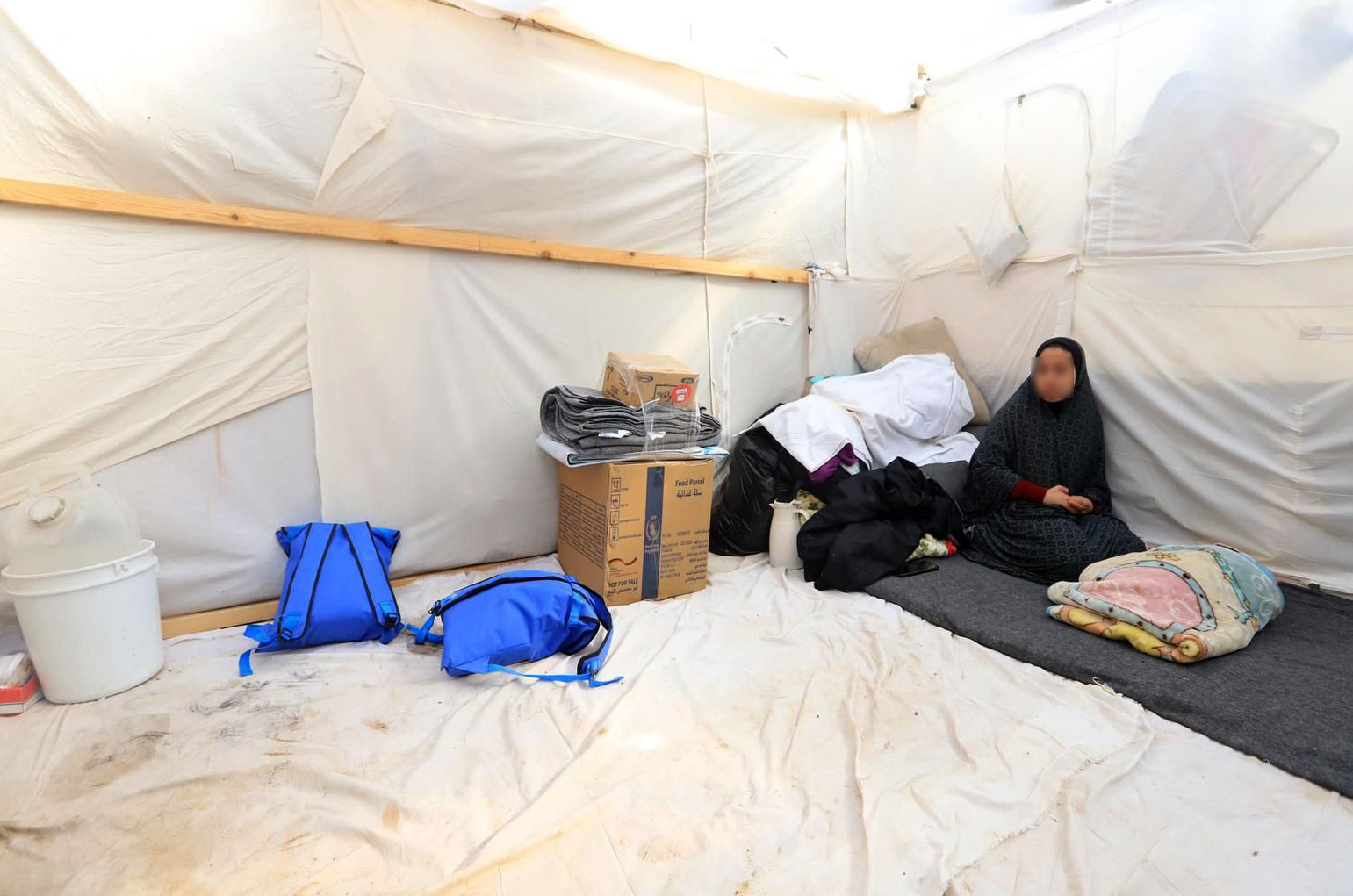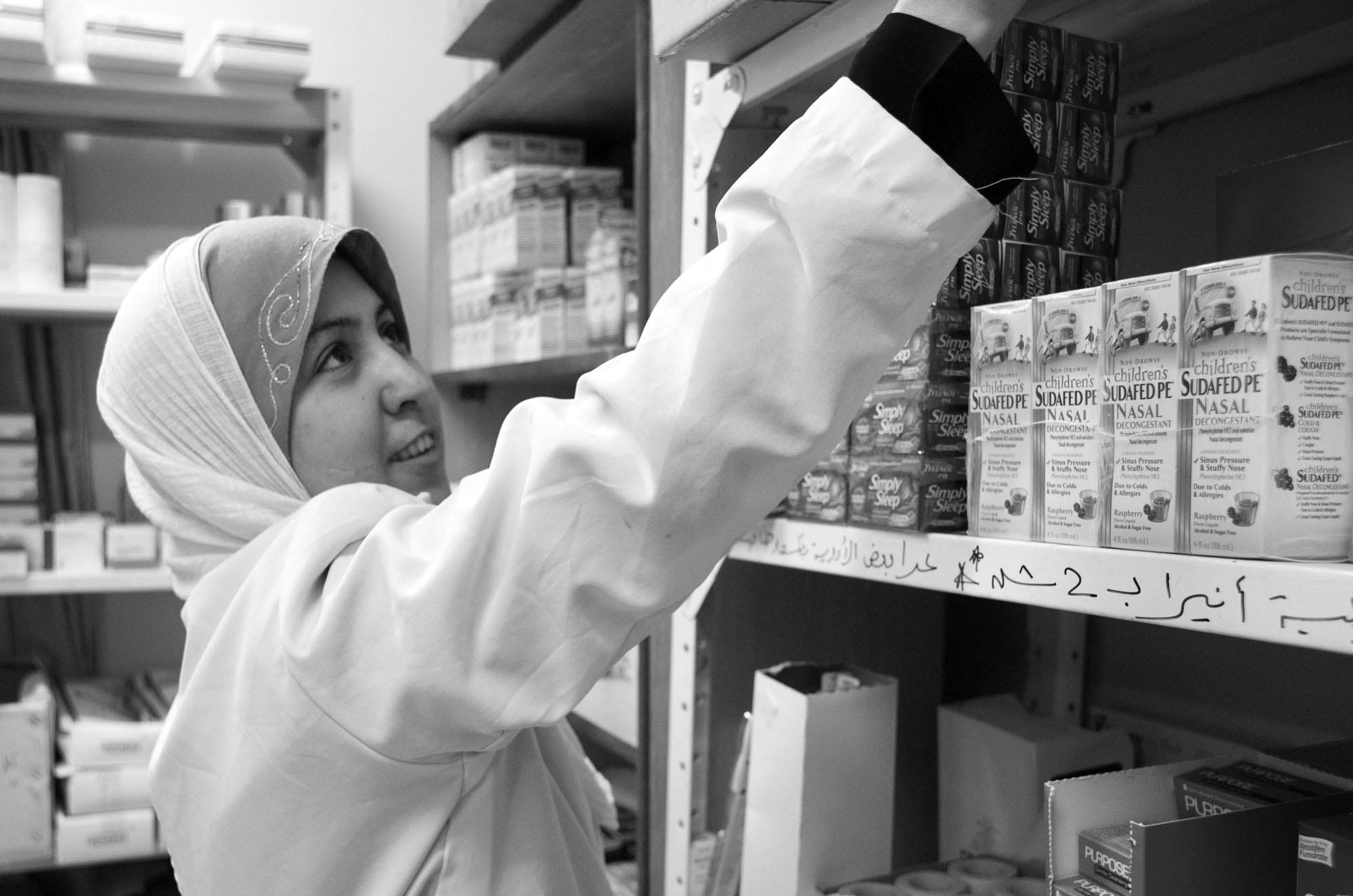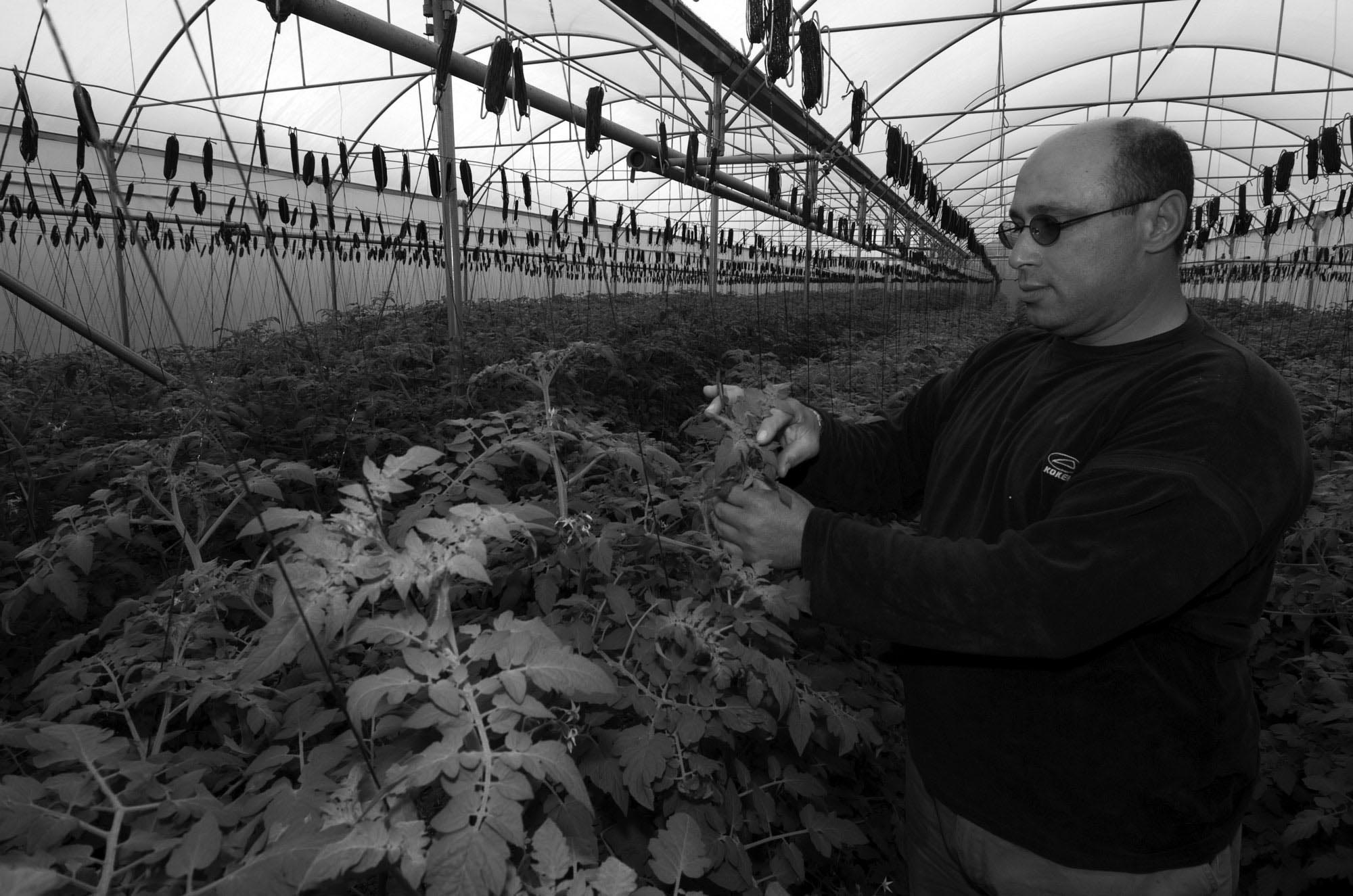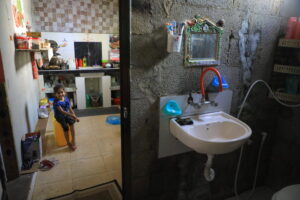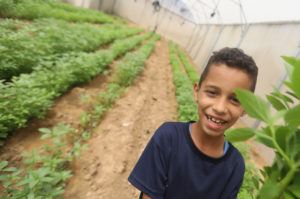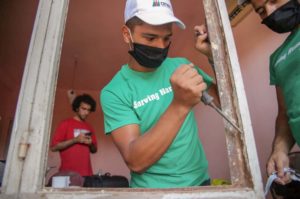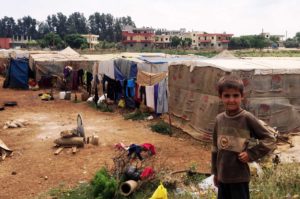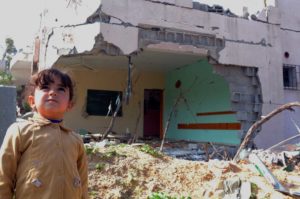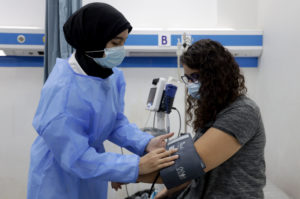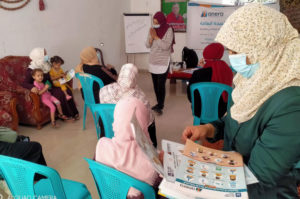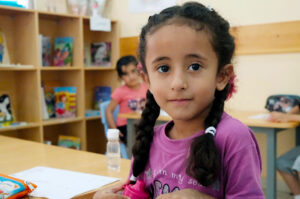Gaza is suffering. Before October 7, about 80% of Gaza's 2.3 million people needed humanitarian aid. Now, almost everyone urgently needs help. Anera is providing food, water, medicine, and hygiene kits to those in Gaza affected by the war. Donate now to help innocent people in Gaza.
Stay updated on Gaza's news and track Anera's daily response log.
BY THE NUMBERS
The Situation in Gaza
85%
of Gaza's population is displaced.
With more than 1.8 million people forced from their homes, the humanitarian crisis is acute and only growing worse.
> 50%
of homes in Gaza have been completely destroyed.
Many Palestinian families are now homeless or at overcrowded UN shelters with little to no resources.
141 square miles
is the total size of the Gaza Strip.
Before the war, Gaza's more than 2 million residents were spread out in this small strip of land.
Gaza War
The 2023-2024 Gaza war has been marked by tragic humanitarian crises, exacerbating the long-standing suffering of civilians in the territory. The conflict began in October 2023 and quickly escalated, leading to widespread devastation in Gaza and a severe humanitarian emergency.
556
days since the war began.
142
countries where our donors are from.
Give today
Join our community of supporters.
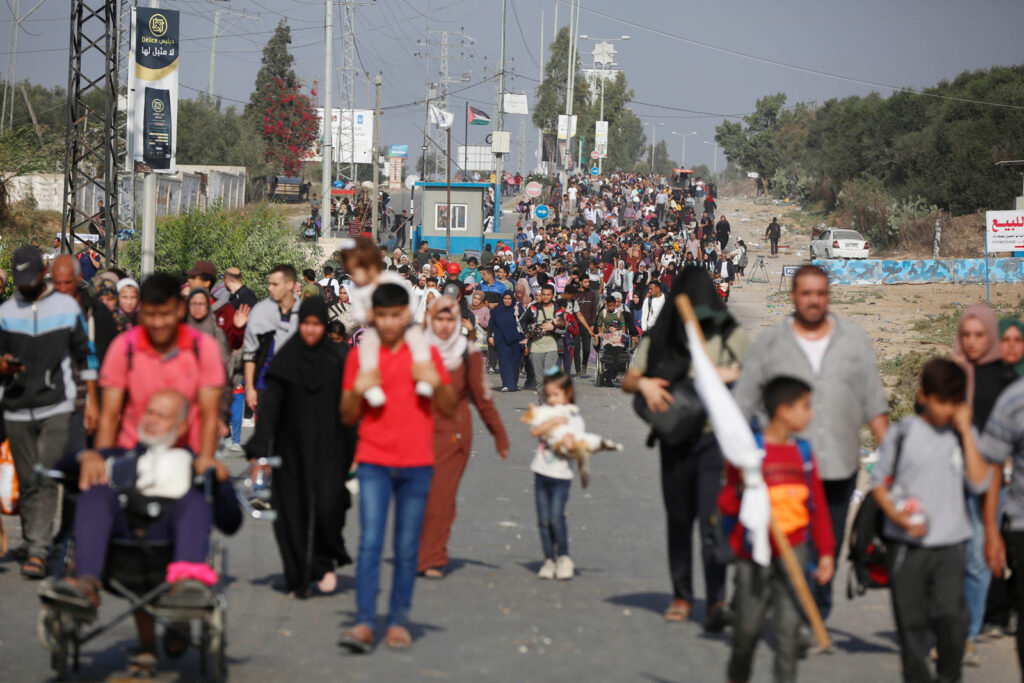

Anera's Gaza staff, from the very communities they serve, demonstrate extraordinary dedication in these challenging times. Their heroic efforts persist despite facing the same levels of violence and displacement as the rest of Gaza's population. Recognizing the imperative to prioritize safety, Anera emphasizes that our staff must adopt all reasonable measures to safeguard themselves and their families. This commitment extends to refraining from work or aid delivery until conditions are deemed safe. For more information about our work in Gaza, see our Gaza FAQs.
Who lives in Gaza?
A population of refugees and their descendants
The wars of 1948 and 1967 left hundreds of thousands of Palestinians homeless. Many ended up in Gaza and approximately 80% of the current population is not from there, but instead originated from other parts of historic Palestine. Over time, the eight Palestinian refugee camps transitioned from tents to semi-permanent housing.
Learn more, read our Gaza Primer.
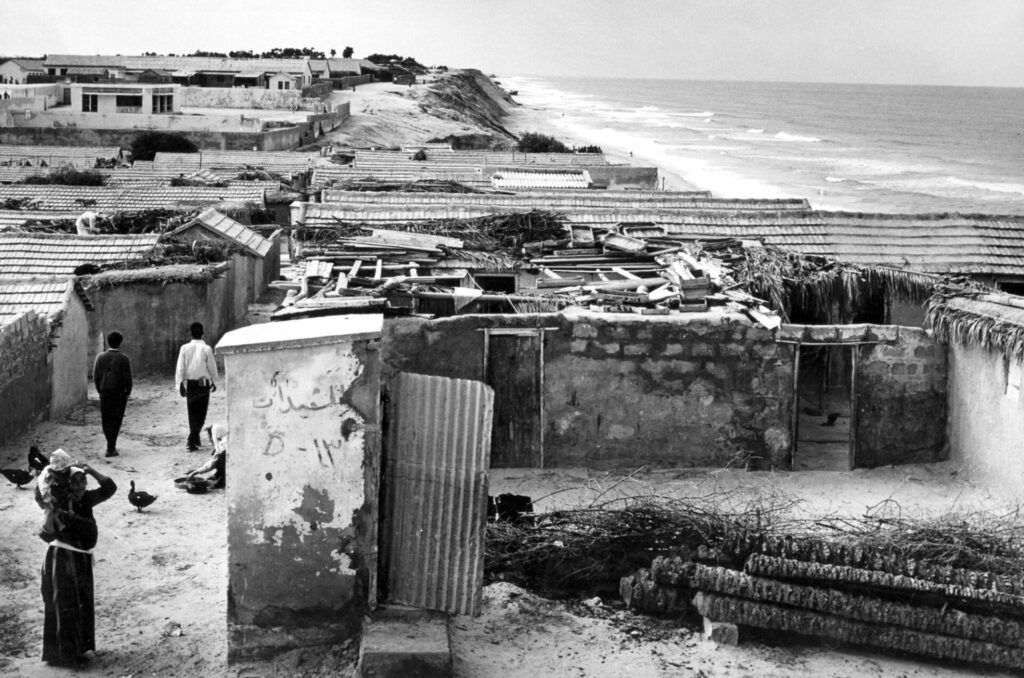

What Was the Situation in the Gaza Strip Before October 7th?
Between 2007 and October 2023, a blockade imposed by Israel and Egypt had stifled Gaza's economy, restricting the import and export of goods, including vital medical supplies and farmers' produce. This situation led to widespread poverty, with a shortage of medicines and medical equipment affecting Gaza's residents.
Hospitals in Gaza faced challenges treating patients due to outdated medical equipment and shortages of essential supplies like blood bags and medications. Individuals with disabilities encountered difficulties with inadequate care and inaccessible facilities. Water quality remained a concern, contributing to illnesses, while poor sanitation, exacerbated by the absence of sewage networks, further compounded the hardships faced by communities.
Critical resources like water and electricity were in severe shortage, with daily power cuts due to inconsistent supply from fuel and electricity providers. Gaza residents grappled with a power crisis, impacting water purification, farming, and daily tasks. The unpredictable nature of electricity availability disrupted daily routines, making it challenging for residents to focus on essential activities.
Despite these myriad challenges, the resilient people of Gaza had successfully built a functioning and intricate society that encompassed commerce, small businesses, education, art and culture, basic healthcare and private ownership of property and possessions. Regrettably, much of this progress was dismantled after October 7th, leaving the community devastated. In light of these dire circumstances, it becomes imperative for the international community to formulate and present a new vision for Gaza, aiming to alleviate the profound suffering experienced by the Palestinian population in the region.
GAZA STORIES
Our Impact
Many of these stories take place before the Gaza war started on October 7, 2023 and reflect Anera’s long term development work in the region.
Learn About Anera's Deep Roots in Gaza
Anera has delivered programs in Palestine since 1968. Choose a governate and click to learn more about Anera's work in that area.
North Gaza
Current Projects
- Supporting women’s cooperatives
- Delivering medical aid to local partners in Beit Lahia and Jabalia
- Supporting childhood nutrition and education through Farms to Fosool
- Providing greenhouses to vulnerable families
Recent Projects
- Rebuilt conflict-damaged kindergartens
- Build health clinics and rehabilitation centers
- Upgraded wells and water and wastewater networks
Learn more about our long history and work in North Gaza
Gaza
Current Projects
- Providing home rooftop gardens to families
- Installing reverse osmosis water filtration units at healthcare facilities, schools and community centers
- Supporting women entrepreneurs with equipment, training and mentorship through Women Can
Recent Projects
- Renovated the Asqula stormwater basin
- Renovated kindergartens and other educational institutions
- Renovated the Gaza Sports Club
- Delivered dialysis machines to Shifa Hospital
Learn more about our long history and work in Gaza City
Deir Al Balah
Current Projects
- Installing greenhouses and irrigation systems
- Delivering freshly prepared, nutritional meals to kindergartens
- Supporting women entrepreneurs through our Women Can program
- Distributing medical aid to local healthcare providers
Recent Projects
- Constructed a new educational space in Al Zawayda
- Rehabilitated agricultural roads
- Built or renovated a number of preschools
- Installed reverse osmosis desalination and solar systems at schools
- Renovated the Musaddar sports club
- Installed a new wastewater network that prevents flooding and contamination in the Deir Al Balah Refugee Camp
Learn more about our long history and work in Deir Al Balah
Khan Younis
Current Projects
- Supplying medical aid to local medical clinics
Recent Projects
- Built scores of greenhouses with irrigation networks
- Renovated a rehabilitation center for children with disabilities
- Constructed a brand new facility for the community center of the Charitable Future Society
Learn more about our long history and work in Khan Younis
Rafah
Current Projects
- Providing food vouchers during Ramadan to assist the most vulnerable families
- Distributing medical aid to local healthcare partners like the Rafah chapter of the Gaza Central Blood Bank
- Installing family greenhouses on small land plots and rooftops
Recent Projects
- Hosted a series of psychosocial support camps for young children in response to the August 2022 bombings in the area
- Renovated a number of kindergartens
- Installed reverse osmosis desalination system on an irrigation network, improving crop yields and quality
Learn more about our long history and work in Rafah
Gaza Palestinian Refugee Camps
Gaza is home to about 24 percent of the world's Palestinian refugees, second only to Jordan, which is home to about 40 percent. Many Palestinian refugees also live in the West Bank, Syria and Lebanon. Before the war, Gaza's refugees lived in eight different refugee camps. Now many of these camps have been bombed, depopulated and reduced to rubble.
In this log, Anera will provide updates on unfolding war in Palestine and our response. Please stay tuned here for the latest information.

